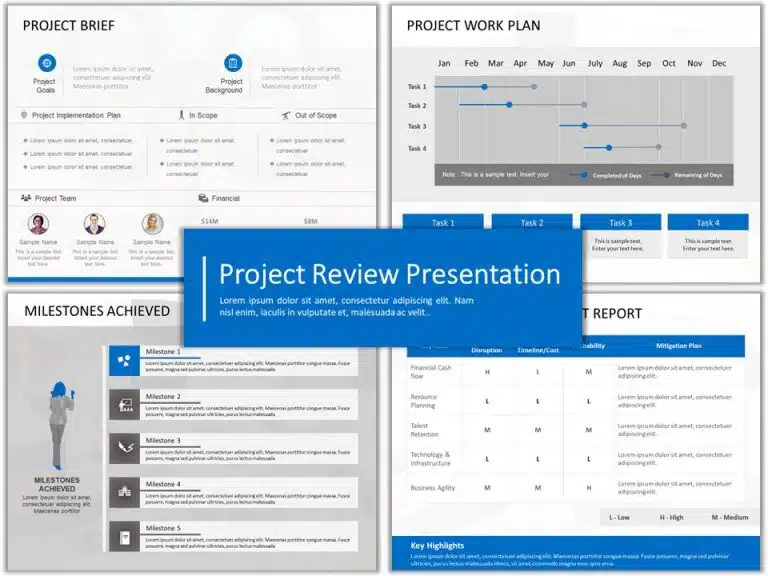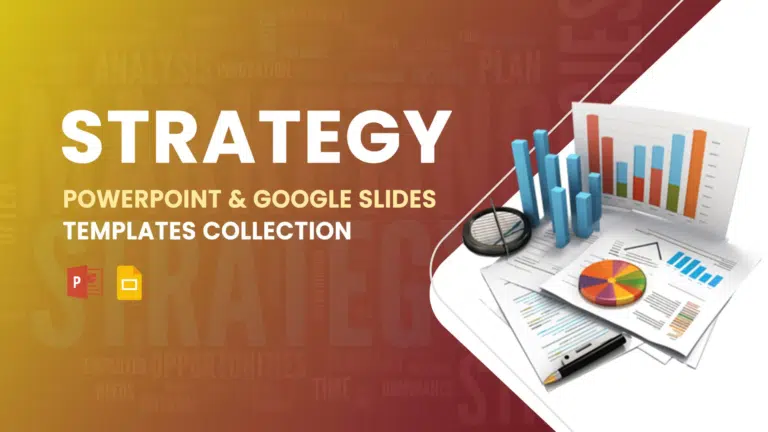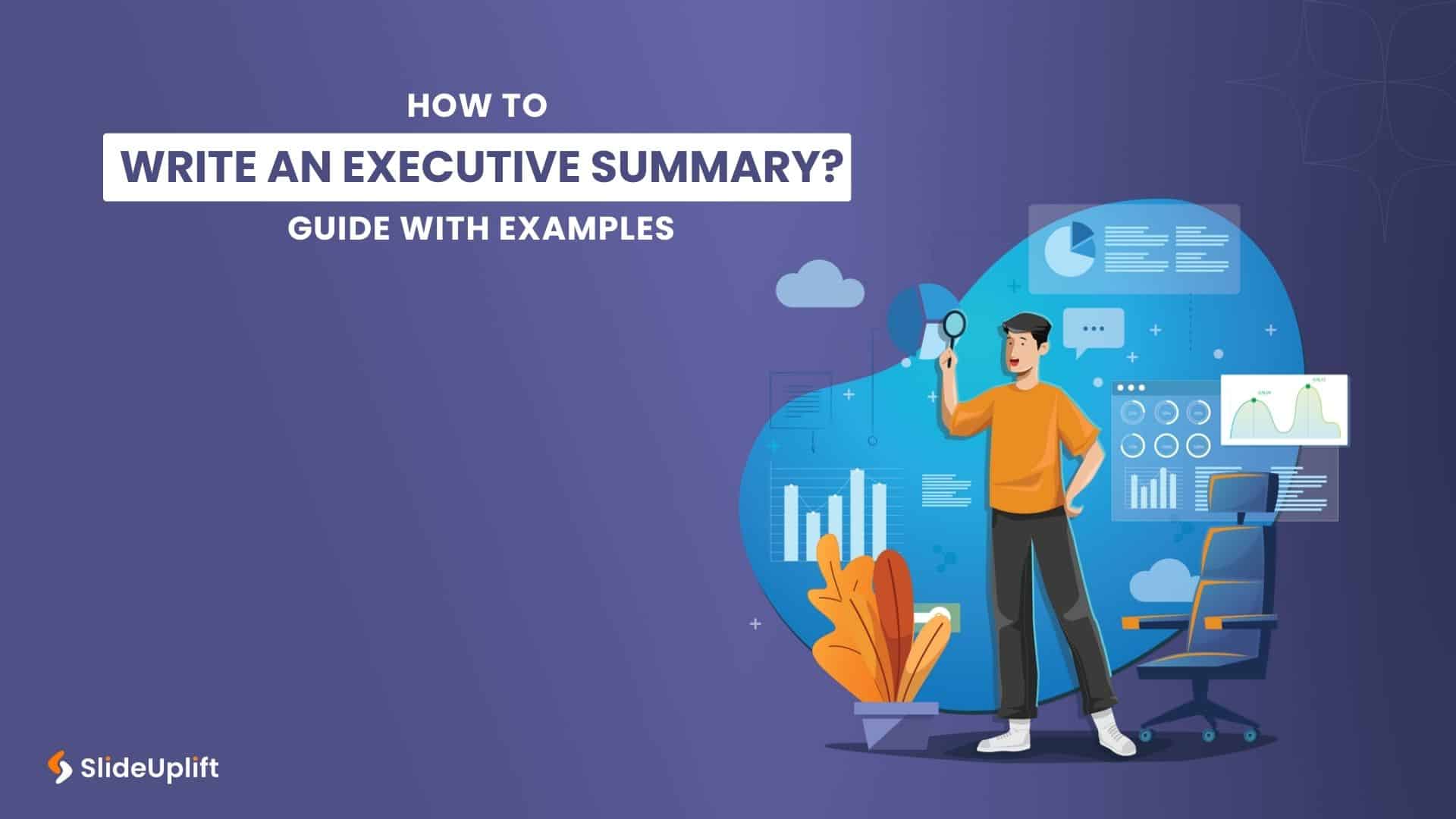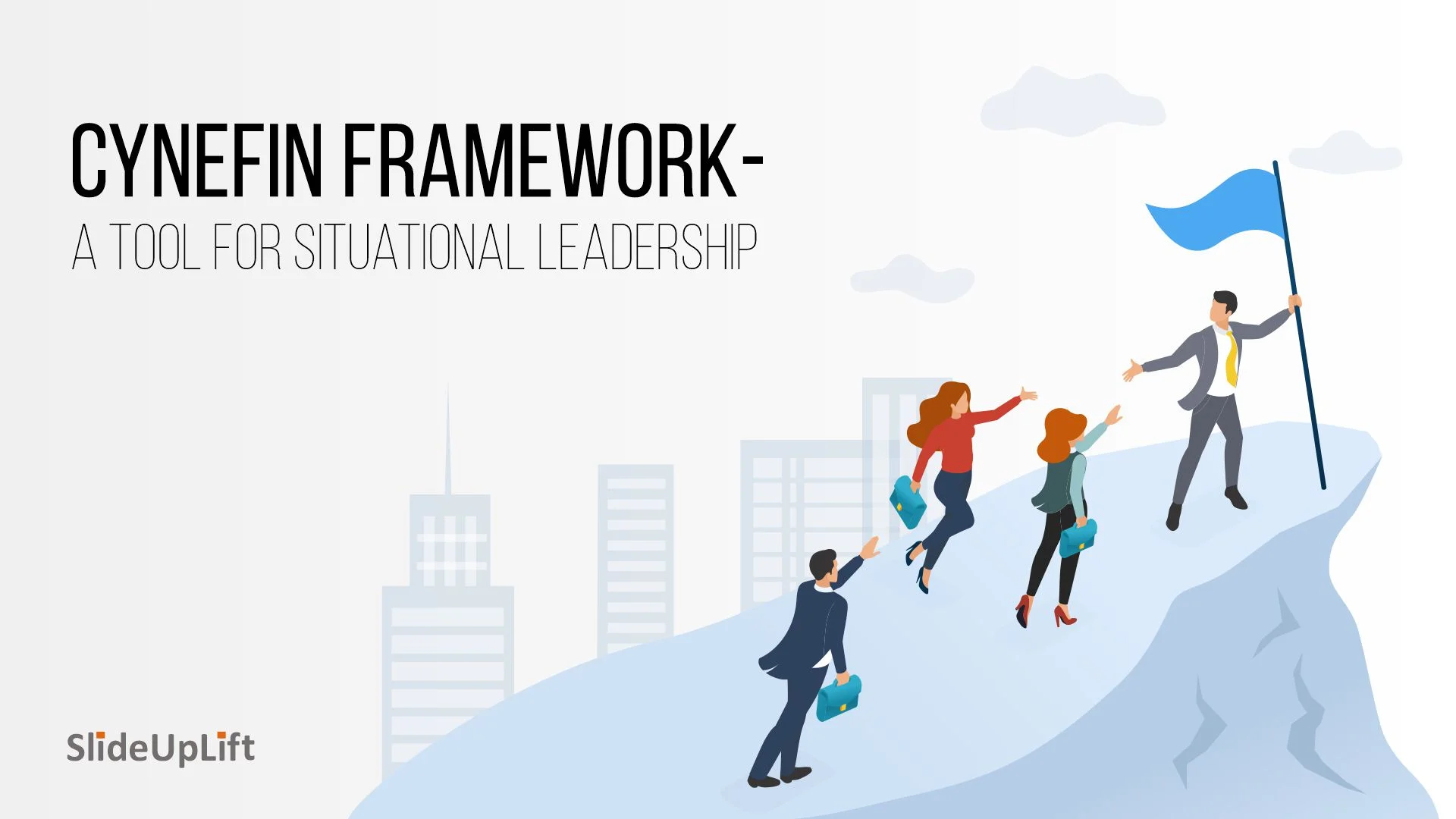C-Suite Mastery: Guide to High-Stakes Executive Presentations
C-level presentations are pivotal—not just for business outcomes, but for making your voice count where it matters most. Executives steer the company’s direction, and the insights you share often influence big decisions. These meetings are high-stakes, and your message needs to land with clarity and confidence. But here’s the catch: executives don’t have time to spare. Their focus is sharp, and their calendars are packed. If you can’t get to the point quickly, you risk losing their attention.
That’s why your C-suite presentation must be direct, purposeful, and structured to deliver impact from the very first slide. No fluff—just insight, clarity, and strategic focus.
What are C-Suite Presentations?
A C-suite presentation or executive presentation is a strategic communication designed to deliver critical information, ideas, or proposals to senior leaders and decision-makers within an organization. These presentations are typically high-stakes, as they often influence major decisions in any organization. To be effective, an executive presentation must go beyond simply informing—it should persuade, align, and drive action. This requires a clear, concise, and purposeful delivery that resonates with the executive audience. Successful presenters tailor their message to the audience’s priorities, communication style, and time constraints, ensuring the content is relevant, engaging, and easy to absorb.
Careful planning, a strong structure, and a focus on delivering value through actionable insights are essential. When crafted thoughtfully, a C-suite executive presentation becomes a powerful tool for gaining support, accelerating decision-making, and moving strategic initiatives forward.
Types of C-Suite PowerPoint Presentations and Their Structure
Executive presentations vary depending on the context and the goal. Whether you’re pitching a new idea or reporting on results, understanding the type of presentation you’re delivering helps you focus your message and speak directly to what C-level executives want and what you should know about your presentation needs when presenting to C-level executives. Let’s take a closer look at what the C-suite types of presentations are like:
1. Strategic Plan Presentations
- Purpose: Outline the organization’s long-term vision and strategic initiatives.
- Objective: Align teams around key business priorities and set a roadmap for execution.
- Tonality: High-level, visionary, data-backed, focused on measurable outcomes.
- Distinctive Point: Provides a broader view of organizational goals and how to achieve them over time.

2. Project Proposal Presentations
- Purpose: Pitch new initiatives, products, or programs.
- Objective: Secure approval, funding, or buy-in by presenting a strong business case.
- Tonality: Confident, data-driven, focused on value, feasibility, and return on investment.
- Distinctive Point: Focuses on the “why” and “how” of a specific project with a focus on getting approval or resources.
3. Performance Review Presentations
- Purpose: Review key performance metrics and outcomes (usually quarterly).
- Objective: Highlight wins, performance insights, identify challenges, and provide insights for decision-making.
- Tonality: Analytical, reflective, focused on storytelling behind the numbers.
- Distinctive Point: Combines data with narrative to explain performance and suggest future actions.
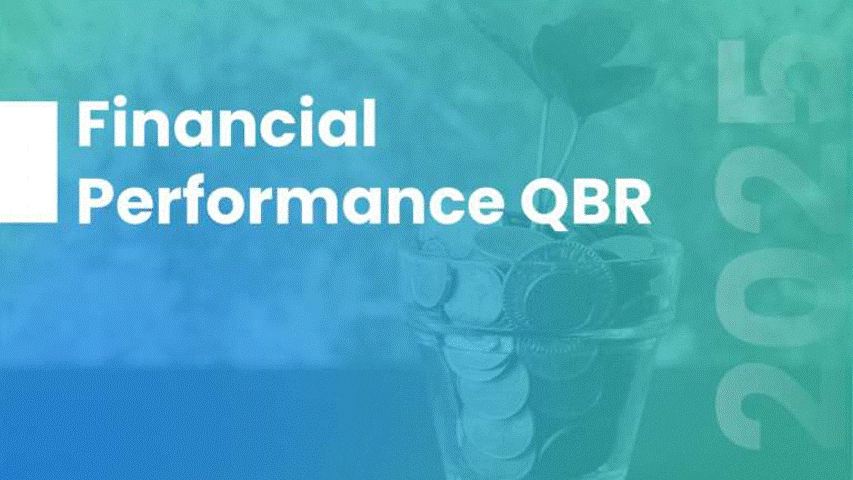
4. Crisis Management Presentations
- Purpose: Address urgent issues or crises (financial, reputational, operational).
- Objective: Provide updates, assess the situation, and explain steps being taken to manage the crisis.
- Tonality: Direct, reassuring, confident, focused on control and resolution.
- Distinctive Point: Focused on immediate impact and a clear path forward during uncertain or high-stress situations.
5. Financial and Budget Presentations
- Purpose: Present financial health or propose new budgets.
- Objective: Simplify complex figures and provide strategic justification for financial decisions.
- Tonality: Clear, confident, fact-based, and numbers-driven.
- Distinctive Point: Focuses heavily on data, trends, and financial justifications for decisions or investments.
6. Change Management Presentations
- Purpose: Guide leadership through significant organizational changes.
- Objective: Explain the need for change, the implementation process, and future steps.
- Tonality: Empathetic, solution-oriented, strategic, and forward-looking.
- Distinctive Point: Focuses on managing transitions and ensuring smooth adaptation to new processes or structures.
7. Status Update Presentations
- Purpose: Provide updates on ongoing projects, initiatives, or operational performance.
- Objective: Keep executives informed of progress, issues, and adjustments.
- Tonality: Concise, visual, to-the-point, and focused on milestones.
- Distinctive Point: Primarily for tracking progress and ensuring alignment with larger business goals.
8. Risk Assessment Presentations
- Purpose: Identify and assess potential risks to the organization.
- Objective: Help executives understand what risks might impact business objectives and the mitigation plans in place.
- Tonality: Analytical, cautionary, data-driven, and solution-focused.
- Distinctive Point: Centered around risk identification, mitigation strategies, and contingency plans.
9. Innovation and R&D Presentations
- Purpose: Present new product ideas, technological advancements, or research findings.
- Objective: Inform executives of ongoing innovation and demonstrate its value to the business.
- Tonality: Visionary, data-supported, strategic, and forward-thinking.
- Distinctive Point: Focuses on the value and potential impact of new developments or breakthroughs for the future.
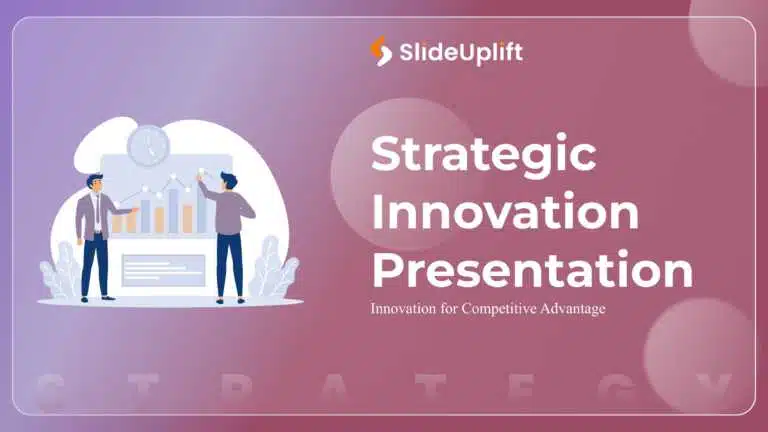
10. Organizational Development Presentations
- Purpose: Discuss talent management, leadership development, and workforce optimization.
- Objective: Help executives make decisions regarding organizational structure and human capital strategy.
- Tonality: Developmental, strategic, human-centered, and forward-looking.
- Distinctive Point: Focused on shaping the workforce to align with business goals and culture.
11. Corporate Social Responsibility (CSR) Presentations
- Purpose: Communicate the impact of the company’s CSR initiatives.
- Objective: Showcase the alignment between CSR efforts and the company’s values, long-term goals, and reputation.
- Tonality: Ethical, values-driven, and community-focused.
- Distinctive Point: Focuses on how corporate responsibility efforts align with business strategy and public perception.
12. Mergers & Acquisitions (M&A) Presentations
- Purpose: Discuss potential mergers, acquisitions, or divestitures.
- Objective: Provide clarity on the strategic fit, key messages, financial impact, and integration strategy.
- Tonality: Analytical, strategic, and solution-oriented.
- Distinctive Point: Focuses on the strategic reasons for the M&A and its future benefits.
13. Marketing Strategy Presentations
- Purpose: Present the company’s marketing initiatives and strategy.
- Objective: Align leadership on key marketing goals, campaigns, and expected outcomes.
- Tonality: Strategic, data-driven, and audience-focused.
- Distinctive Point: Focuses on how marketing initiatives support business growth and revenue generation.

Best Practices to Give Your Presentation That Executive Edge
How to present to C-level executives effectively is a critical skill for anyone aiming to influence decisions at the top. Presenting to the C-suite requires clarity, purpose, and strategic alignment. Whether you’re delivering an update, proposing a new initiative, or a new project, knowing how to present to executives can determine your message’s success. The right executive-level PowerPoint presentation examples can help you keep content concise, focused, and impactful. This section will cover key executive presentation best practices to help you engage your audience, deliver value, and drive action.
Below are a few key points to remember:
1. First, know your audience (Senior Executives) inside out.
Before you even start building your slides, take the time to understand who you’re presenting to. What do they care about? How do they typically respond in meetings? For example, a CFO might ask questions that don’t seem directly related to your content, but they tie back to the financial impact or business strategy. That’s why it helps to speak to colleagues who’ve presented to them before or review previous sessions if possible. The more you know, the more confident and prepared you’ll be—and that kind of preparation really sets you apart.
2. Then, Structure Your Message for Crystal Clear Understanding.
A well-structured executive presentation is essential for clarity and impact. Begin by outlining key points and organizing them logically, from introduction to conclusion. Use bullet points to simplify complex information and focus on summarizing the main messages or takeaways throughout. Visual aids should complement your message, reinforcing key points without overwhelming the audience. Conclude with a recap of the main points and a clear call to action to guide next steps.
3. And here’s a tip that works wonders: start with your conclusion.
Yes, right at the beginning. Lay it out clearly—what your recommendation is, what decision you’re asking for, or what result you’re aiming for. This is called pyramid thinking—you start with the main idea and build the case underneath it. It focuses the conversation, and executives appreciate knowing exactly where you’re headed. From there, walk them through your key points and supporting data. It makes your executive presentation tighter and more aligned with how executives process information.
4. Next, keep your message crisp and to the point.
C-level leaders value their time more than anything. They want clarity, fast. So you need to cut the fluff and get right to the heart of your message. It takes work to distill your content into something that’s sharp and effective—planning, drafting, and revising until every word counts. A good trick is to send out a pre-read ahead of time. That way, you can skip the background during the meeting and focus on what really matters: the decision or action you’re driving toward.
5. Create a Narrative That Supports Your Vision.
A strong narrative is at the heart of every successful executive presentation. You want to start by setting the stage—lay out the context and clearly define the challenge or opportunity you’re addressing. From there, present your vision as the solution, supported by relevant data and real-world examples. Make sure every slide ties back to your core message. This not only keeps your audience engaged but also helps build a clear, persuasive case for your proposal.
6. Don’t Just Show Data, Embrace Storytelling.
To deliver a memorable executive presentation, it’s essential to strike a balance between data and storytelling. While data provides the factual foundation that builds credibility, storytelling adds context and emotional resonance, making your message more relatable and easier to retain.
Start by presenting key data points clearly, using visuals to simplify complex information. Then, reinforce those insights with real-world examples or case studies to show impact. This blend not only captures attention but also enhances understanding, ultimately making your presentation more persuasive and actionable.
7. Go easy on the Gimmicks.
Animations, transitions, flashy charts—they can be tempting, but you need to use them sparingly. Executives are quick to pick up on style over substance, and too many effects can actually undermine your credibility. If a visual effect truly helps illustrate a point—say, revealing a product concept—it’s fine. But if it’s just there for flair, leave it out. Focus on content and delivery; that’s what wins trust.
8. Be ready for questions and interruptions, because they will come.
This is normal. Executives ask questions to test your thinking or dig deeper into what matters to them. Sometimes it’s curiosity, sometimes it’s strategy. So be flexible. You might get interrupted mid-slide—just stay calm, answer briefly, and point out that the fuller answer is coming up. These are some laid out possibilities to tackle this situation:
- Set expectations upfront. Let the audience know you’ve structured the presentation to address key questions as it unfolds, and ask them to hold non-urgent questions until the end or key checkpoints. This helps maintain flow while still showing you’re open to dialogue.
- Send pre-reads in advance. Sharing relevant background material beforehand allows executives to come in with context, so you can focus on the core message and decision points during the meeting.
- Provide handouts or printouts for in-person meetings. This gives them the flexibility to flip ahead if needed, which can ease their curiosity without disrupting the presentation rhythm.
Be Prepared to Present Under Pressure.
- C-suite executive presentations are high-stakes and demanding. With limited attention spans and sharp expectations, senior leaders expect clear, concise, and actionable insights quickly. They’re known for challenging assumptions and cutting straight to the core of your message.
- To make an impact, your content must be focused and your delivery confident. Use strategic storytelling and visuals to engage, but avoid overloading with details. Prepare thoroughly for interruptions and questions, responding with clarity and control.
- Success lies in aligning your message with executive priorities and maintaining composure under pressure. When you lead with purpose and precision, your presentation stands out.
Why Executive Presentation Training Matters?
Investing in executive presentation training can significantly enhance your ability to communicate effectively with senior stakeholders. Specialized training programs focus on key areas such as persuasive storytelling, impactful slide design, and advanced audience engagement techniques. By refining these skills, you’ll be better prepared for any presentation to top management. These courses offer invaluable practice and feedback, helping you build confidence and improve your delivery. Learning how to present to C-level executives is crucial, as it allows you to craft a clear, concise, and compelling presentation C that resonates with senior leaders. With the right training, you’ll be equipped to make a lasting impact in presentations to the C-suite, ultimately driving decision-making and aligning with organizational goals. Check out this article on presentation statistics and trends and how they are shaping executive-level communication.
Conclusion
Mastering executive presentations or presenting to the C-suite isn’t just about polished slides—it’s about sharing ideas with clarity, authority, and strategic alignment. Whether you’re influencing decisions, proposing change, or reporting performance, each presentation is an opportunity to build trust and credibility with the C-suite. With the right structure, tools, and training, you can lead the conversation and help drive your organization’s success. For more tips on improving your presentation skills, check out our blog to learn how to make your C-suite presentations more effective and impactful.
FAQs
-
What exactly is covered in the Executive Dashboard Presentation Training?
Executive Presentation Training focuses on building strong storytelling, slide design, and audience engagement skills—especially for high-level stakeholders. It includes hands-on practice with feedback, along with guidance on crafting executive summaries, identifying key messages, and tailoring content to specific audiences. The goal is to boost confidence and impact when presenting to leadership.
-
What are the types of executive presentations?
Executive presentations vary by purpose—common types include Strategic Plan Presentations, Project Proposals, and Performance Reviews. Each serves a distinct goal, whether outlining future direction, seeking approval, or evaluating outcomes. Knowing the type helps tailor content and delivery to executive expectations.
-
What questions should an executive presentation answer?
An effective executive presentation should clearly address: What is the goal? What problem or opportunity exists? What are the recommendations? It should also highlight ROI, expected outcomes, and required executive actions. Answering these ensures a focused, relevant, and engaging presentation.

